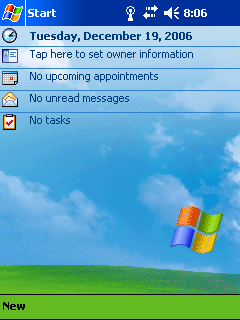| Version of the Windows Mobile operating system | |
| | |
 | |
| Developer | Microsoft |
|---|---|
| Source model | Closed source |
| Released to manufacturing | June 23, 2003 |
| Preceded by | Pocket PC 2002 Smartphone 2002 |
| Succeeded by | Windows Mobile 5.0 |
| Support status | |
| Mainstream support: Ended on July 14, 2009 [1] Extended support: Ended on July 8, 2014 [1] | |
Windows Mobile 2003, originally codenamed "Ozone", [2] is a member of the Windows Mobile family of mobile operating systems, released on June 23, 2003, succeeding Pocket PC 2002 and Smartphone 2002. It was the first Microsoft mobile OS to be called "Windows Mobile" and is based on Windows CE 4.2.